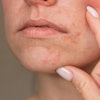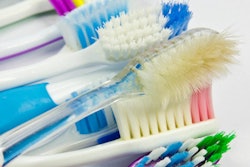
Effective toothbrushing requires a systematic approach, but previously there has been no way to measure effectiveness. Researchers have now developed and tested a new system for quantifying toothbrushing systematics, the Toothbrushing Systematics Index (TSI).
This index consists of three components -- completeness, isochronicity, and consistency -- and accounts for the fact that effective toothbrushing requires a sufficient amount of time. In a study published in PLOS One (April 30, 2018), the authors described the development of the index and how they tested it.
"The suggested new [TSI] can quantify changes in toothbrushing systematics in a valid manner," wrote the authors, led by Dr. Nadine Schlueter, a professor and the head of the cariology division at the University of Freiburg Medical Center in Germany.
Quantifying it
Published literature has rarely addressed the role of systematic brushing and whether oral hygiene instruction or other methods are effective. For example, in the 2004 Color Atlas of Dental Medicine: Periodontology, Wolf, Rateitschak, et al suggested one such system for systematic brushing, recommending that brushing proceed as follows:
“The suggested new [TSI] can quantify changes in toothbrushing systematics in a valid manner.”
- Start on the posterior oral surfaces of the lower jaw on the right side (or the left side for left-handers).
- Continue to the anterior and contralateral posterior region.
- Proceed to the oral surfaces of the upper jaw, moving from the posterior to anterior and to the contralateral posterior sites.
- Conclude by brushing vestibular sites and then the occlusal sites similarly.
The authors of the current study noted that the system proposed by Wolf et al displays three essential components for systematic brushing:
- Completeness, with all areas of dentition reached
- Isochronicity, which is the equal distribution of brushing duration between all areas
- Consistency, which is defined as avoiding frequent alternations between areas
To that end, Schlueter and colleagues sought to create an index that considers the three components of brushing systematically. They developed the index based on theoretical data and then validated it using clinical data taken from videos of participants brushing their teeth before and after receiving instruction.
They used clinical data from a previous randomized controlled clinical trial on adopting toothbrushing technique and systematics on adults ranging in age from 19 to 42 years. Participants in this trial used no orthodontic appliances and had no removable prostheses.
The intervention group received instructions on toothbrushing systematics according to Wolf et al twice through a leaflet or practical demonstration using a model. Researchers filmed them brushing their teeth at baseline and two weeks after receiving instruction.
Using the theoretical concept of the three components of systematic brushing, the current researchers developed their index for use with timed-event, sequential data based on two behavioral measures designed to quantify the degree of systematic brushing:
- Consistency, based on a mathematical formula that considers the frequency of changes with the toothbrush between the areas of the mouth in relation to total brushing duration
- Isochronicity, based on the distribution of brushing duration by the mean absolute deviation of the relative brushing duration in each reachable area in the mouth
Each measure results in an index value between 0 and 1, with values toward 0 indicating poor toothbrushing technique. Adding them together produces the TSI.
The researchers developed the index based on more than 1,200 brushing sequences based on clinical observation data from previous studies.
Under the condition that all areas were brushed for the same amount of time, TSI values ranged from 0 to 1.97 with a mean value of 0.81. Consistency values ranged from 0 to 0.97, with a mean of 0.31, and isochronicity values ranged from 0 to 1.00, with a mean of 0.50. When areas were brushed for differing amounts of time, the TSI ranged from 0 to 1.77, with a mean of 0.78. Consistency values remained the same, and isochronicity values ranged from 0 to 0.80, with a mean of 0.46.
The researchers then validated the TSI data in 26 participants who completely adopted toothbrushing systematics after the first instruction in the instruction group or later instruction in the control group. They found the TSI and the consistency values increased significantly, but the isochronicity values remained constant and the difference was not significant. The data results are shown in the table below.
| Change in TSI in 26 participants who adopted complete toothbrushing systematics | ||
| Baseline | After instruction | |
| Consistency value (range 0 to 1) | 0.53 | 0.82 (p < 0.001) |
| Isochronicity value (range 0 to 1) | 0.67 | 0.70 |
| Toothbrushing Systematics Index | 1.20 | 1.51 (p < 0.001) |
Reconsiderations
The authors noted that the question of whether all areas should be brushed for the same amount of time could be further considered, especially since plaque accumulates unevenly on teeth and calculus is most prevalent on lower anterior teeth. Additionally, bridgework, removable prostheses, and malpositioned teeth are individual risk factors for plaque accumulation.
They explained that, while there is no evidence that a specific brushing order is superior to another, the TSI could be used to analyze specific intervention strategies.
"The intention of this index is to use it in observational studies considering the individual brushing behavior and with oral hygiene instruction strategies," the authors concluded.



















